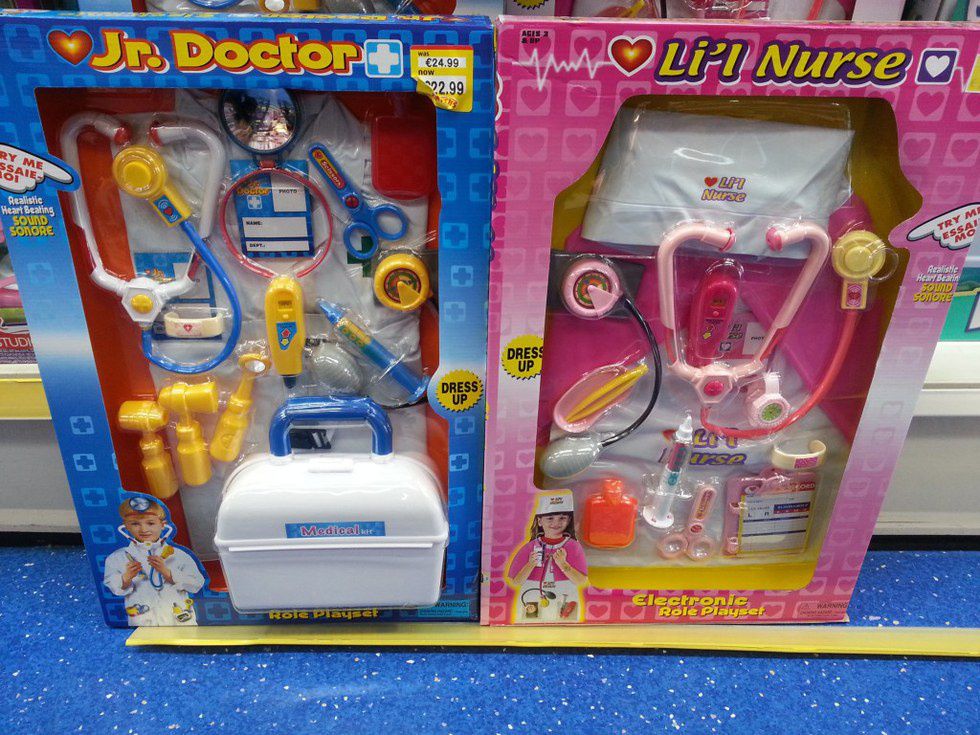When I was a kid, I played with Hotwheels cars, and I grew up watching my dad at the raceway. I played football, basketball and baseball with the neighborhood boys. Actually, most of my friends were boys. I didn’t like wearing dresses, and I wasn’t interested in makeup. Somehow, all of the “boyish” things I did were OK. I was considered a tomboy and that was it. Of course, this didn’t mean that I didn’t play with Barbie dolls and Disney princesses. These were the things I liked, and that’s all that mattered to me.
There has been a rise in the LGBTQIA community regarding the legalization of same-sex marriage. And we see so much development in the transgender community and they are thriving. There is such a huge spectrum of identities between gender and sexuality beyond the cis binary. Gender equality has long been a controversial social issue and it will continue to be as long as society keeps with traditional gender norms.
There are parents out there that are afraid to let their kids be different. They are afraid their kids are more likely to become transgendered because of the rise in recognition of the transgender community and the movements that are attempting to banish gender roles. Perhaps some parents are embarrassed, and some just want to prevent their children from getting bullied. But here’s the thing, kids will get bullied for being who they are… just the same as people are getting killed for being who they are. They need to know that it’s OK to be themselves no matter what. Who they are isn’t the problem.
My fear for the misinformed begins with simple yet highly detrimental statements directed towards children. I hear these all the time:
“Don’t play with that, that’s a girl toy.”
“You’re not a boy, that’s not lady-like for a girl to play like that.”
“What are you gay? That’s for girls.”
People still associate being gay as wrong and a negative thing. That’s not something anyone should feel insecure or ashamed of, especially a child who might not have even learned what it means to be gay. Yet, people are already instilling those horrible connotations in their young minds. If your son has an interest in dolls or fashion, it absolutely does not mean he will turn out to be gay. Maybe he sees his dad taking care of the new baby and wants to give it a try, so he’ll ask for a baby doll. Maybe he likes to be creative and innovative, and he thinks he can do that through designing clothing.
My daughter is biologically female, but I want her to learn that she can be whatever she wants and won’t be limited despite society blending her as a straight, female girl by default. She already gets scolded by other parents and kids because she has a handful of male superhero toys, cars and “boy clothes.” I didn’t buy a set of cars for her until I saw that she liked playing with them. She has a variety of cross-gendered/gender neutral toys. Some are from what stores label as the “girls” section and some are from the “boys” section.
In the end… they. are. just. toys.
The concept of good parenting revolves around teaching kids the values of life, respect, and acceptance. The goal is to guide them, not dictate them and force them to stand by everything that the parents believe, particularly if their values are very traditional. For the sake of a child’s health and development, we need to grace them the freedom to choose what they want to play with.
The idea of “girl” and “boy” toys is ridiculous to me. Gendered toys have always been around. Little girl toys, geared towards household duties like cooking and cleaning, tea sets, and makeup “just like mom!” Little boy toys involved tools and handiwork, male action figures and sports. Between the 80s and 90s, toy marketers found that they could substantially make more profit by advertising gendered toys, so companies made a lot more products specifically for girls and specifically for boys. They even make ones that completely don’t make sense to be gendered. The toy industries and marketers can target whomever they want. The can aim for the pinks and blues or gender neutral, but consumers are the ones to choose the products. In a household that has a girl and a boy, the family is likely to outlaw sharing one single toy set, such as a baseball and a bat. The boy gets the standard wooden bat, maybe a navy blue one. There’s nothing wrong with the girl playing baseball, but she’s going to have to have the pink set of a ball and bat because it’s only for girls.
When we tell kids they can’t play with something because it’s not right for their gender, we’re pulling them off the track of their self-exploration. Babies don’t know gender-specifics. They don’t show preferences until they learn about gender roles and who is “allowed” to play with what. Very young children think in “black and white”, which means that girl and boy standards are boldly different from each other. They are more likely to play with certain toys by influence of their parents, their peers and what is advertised to them.
Toys don’t determine gender and sexuality. They are tools to aid our imagination, cognitive development, personal development and can show us how to be functioning people in society… oh, yes and they are made for FUN! Dividing toys imposes the greater divisions between genders in our culture and we need to realize the importance of that. It’s totally okay for little girls to love their princesses and for little boys to love their superheroes, but we should also be accepting and comfortable if they prefer the vice versa.





















